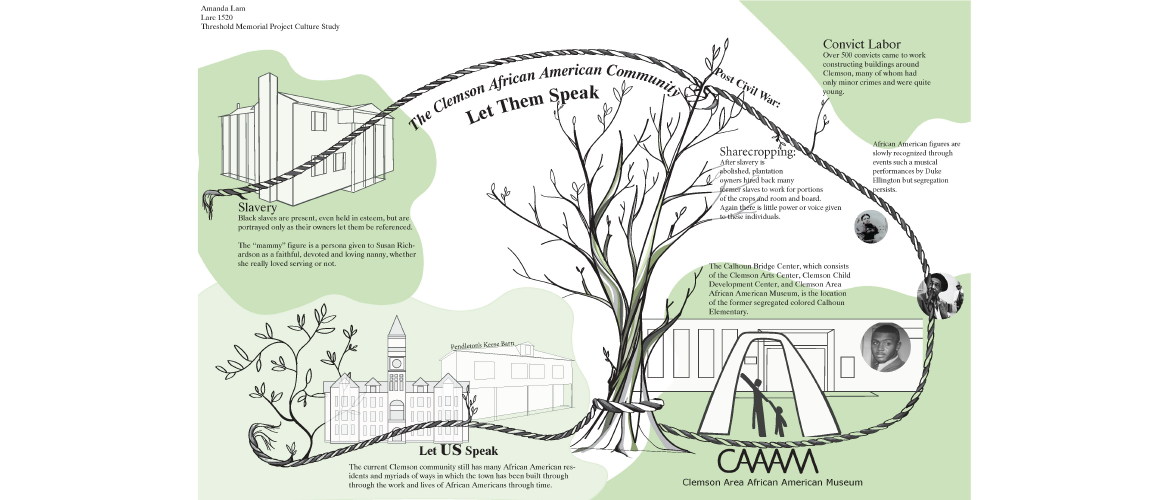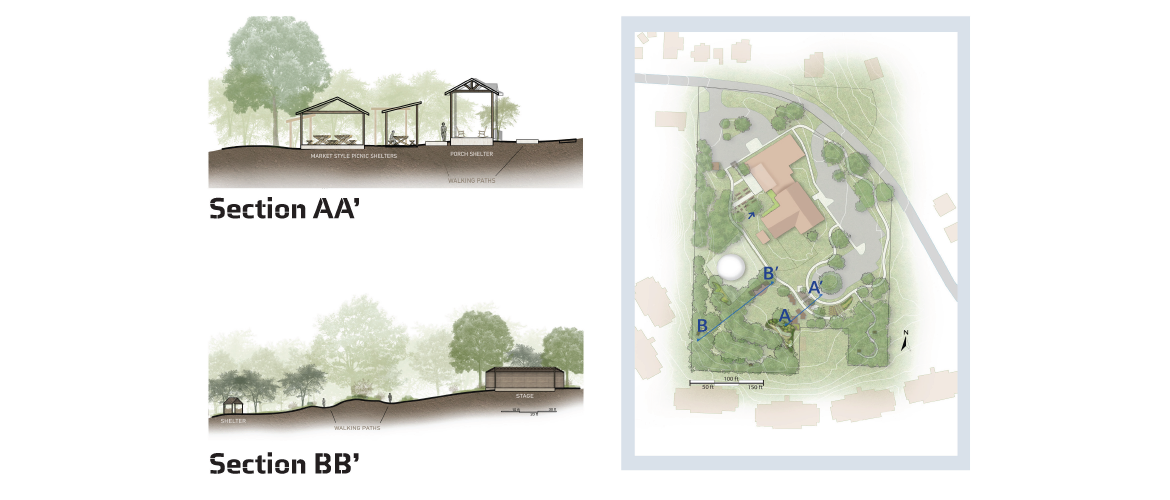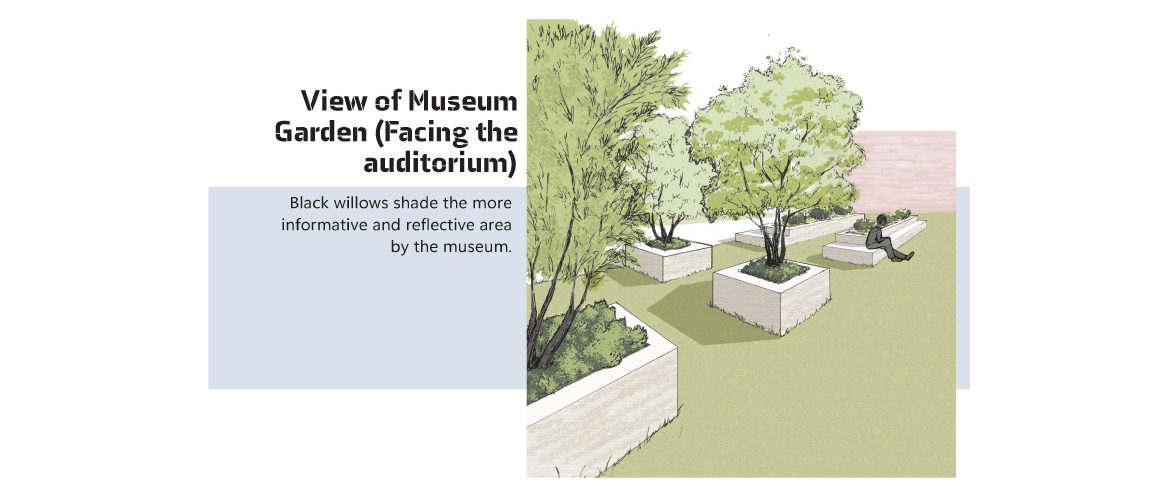Clemson Living Record Memorial
-
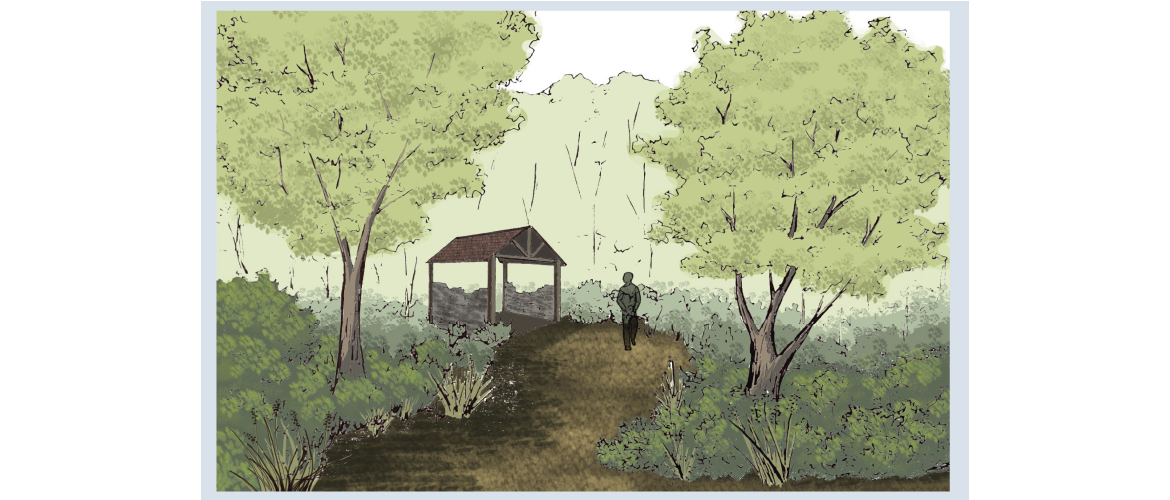
Clemson Living Record Memorial | Amanda Lam | LARC 1520 | Professor Browning
-

Clemson Living Record Memorial | Amanda Lam | LARC 1520 | Professor Browning
-
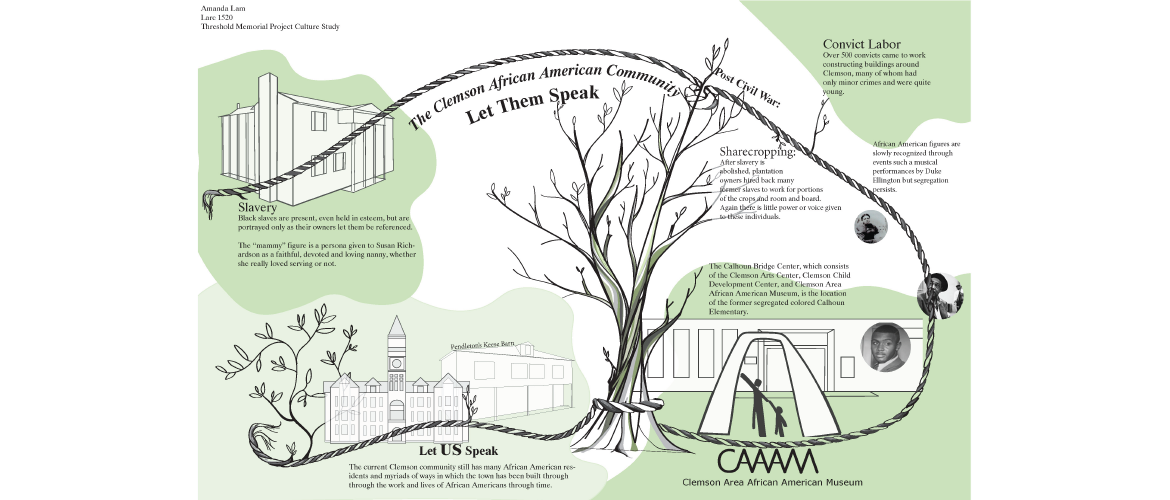
Clemson Living Record Memorial | Amanda Lam | LARC 1520 | Professor Browning
-

Clemson Living Record Memorial | Amanda Lam | LARC 1520 | Professor Browning
-

Clemson Living Record Memorial | Amanda Lam | LARC 1520 | Professor Browning
-

Clemson Living Record Memorial | Amanda Lam | LARC 1520 | Professor Browning
Amanda Lam
LARC 1520 | Professor Browning
Using the same idea of contrast and separation from the precedent, I developed my site to embody the division of a physical barrier and contrast between the KNOWN VS. THE UNKNOWN, between the RECORDED VS. THE UNRECORDED in history. During my cultural analysis research, the idea of parallel versions of history struck me. There were multiple classes of people that coexisted in colonial South Carolina to present times, but with unequal attention. In this site, I divided the main spaces to demonstrate this with the degree of abstract and asymetrical elements. By the entrances to the site and closer to the buildings, the structured geometric layout represents the visible history that summarizes the truth into neat boxes, filtering it through one demographic of record-keepers. On the other side of the path, more asymmetrical paths and organic community spaces celebrate the richness of the life beyond the barrier of record. Some of the same shelters and gardens are similar on opposite sides of the primary path, but they take a different form. The organic side is much larger and engages visitors around an open space and draws them further back. The exact actions and lives in many African American communities may not be recorded, but as visitors seek to look back through time and travel further in the site, they see and experience the culture, legacy, and lives built up despite these boundaries society imposed.


